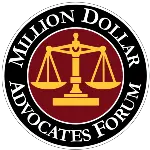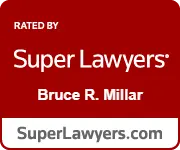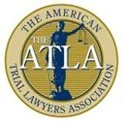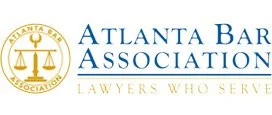A Georgia Car Accident Guide to Understanding the Insurance Policies Involved
Auto Insurance Basics
What you need to know about auto insurance can seem daunting. There are so many different coverages available that it can all be very confusing. Here are the basic coverages you should understand before buying an auto insurance policy.
Table of Contents
Liability Coverage
Accident liability is when someone is legally responsible for paying for the damages caused by an accident. This includes property damage, medical expenses, and lost wages.
Shared liability means that more than one person is responsible for an accident. In Georgia, when multiple drivers share the blame for an accident, it is referred to as comparative fault or modified comparative fault. This means that each driver's negligence is assessed, and they are responsible for their proportionate share of the damages.
For example, if one driver is found to be 70% at fault and the other driver is found to be 30% at fault, then the first driver would be responsible for 70% of the damages and the second driver would be responsible for 30% of the damages.
Bodily Injury (BI) Liability
Bodily Injury Liability coverage pays for the medical expenses and lost wages of others who are injured in an accident that you are at fault for. BI coverage does not cover your own medical expenses or punitive damages.
It is recommended that you have at least the minimum amount of BI coverage required by your state.
Property Damage Liability
Property Damage (PD) liability coverage pays for the cost of repairing or replacing property damage that you cause to others in an accident that you are at fault for. It is mandatory in most states, so you must have it if you own and operate a motor vehicle.
Property Damage Liability coverage typically covers:
- Repairing or replacing damaged property
- Towing damaged property
- PD coverage does not cover:
- Damage to your own property
- Punitive damages
Collision Coverage
Collision coverage is optional auto insurance that pays for damage to your car if you are involved in an accident, regardless of who is at fault. Lenders or leasing companies may require collision coverage if you have a financed or leased vehicle.
Collision coverage typically covers:
- Damage from accidents with other vehicles
- Damage from hitting stationary objects (trees, poles)
- Damage from rolling over your vehicle
- Damage from theft or vandalism
- Damage from falling objects
- At-fault driver with collision coverage: Their insurance company will pay for repairs or replacement, up to policy limits.
- At-fault driver without collision coverage: They will pay for repairs or replacement out of pocket.
- Liability coverage is also included in at-fault driver insurance:
- Property damage liability (PD) coverage pays for repairs or replacement of damaged property of others.
- Bodily injury liability (BI) coverage pays for medical expenses and lost wages of injured individuals.
Comprehensive Coverage
Comprehensive coverage, also known as "other than collision" coverage, is optional auto insurance that protects your vehicle from damage caused by events other than collisions, such as theft, vandalism, fire, hail, falling objects, or flooding.
Comprehensive coverage typically covers:
- Theft or recovery of stolen vehicles
- Repairs from vandalism
- Damage from fires
- Hail damage
- Damage from falling objects
- Flood damage
Comprehensive coverage does not cover:
- Damage from collisions
- Normal wear and tear
- Mechanical breakdowns
Uninsured Motorist and Under Insured Motorist Coverages
Both UM and UIM coverage are optional, but they can be very valuable if you are ever injured in an accident caused by an uninsured or underinsured motorist. Uninsured Motorist (UM) coverage protects you if you are injured in an accident caused by a driver who does not have any auto insurance or whose insurance is insufficient to cover your damages. This coverage can help pay for your medical expenses, lost wages, and pain and suffering.
This coverage can help pay for the difference between what the at-fault driver's insurance company will pay you and the total amount of your damages. UM/UIM coverage typically covers:
- Medical expenses
- Lost wages
- Pain and suffering
UM/UIM coverage does not cover:
- Your own medical expenses
- Property damage
Interpreting Your Own Insurance Policy
It's important to understand your own insurance policy so you know what's covered and what's not. Here are some tips:
- Get your policy documents. This includes the declarations page, coverage schedule, and any endorsements or riders.
- Review key definitions. This includes deductible, copay, coinsurance, and premium.
- Identify covered perils. This is what your insurance will protect you from, like fire, theft, or vandalism.
- Understand exclusions. This is what your insurance will not cover.
- Analyze coverage limits. This is the maximum amount your insurance will pay for a covered loss.
- Review deductibles and copays. This is what you'll pay out-of-pocket before your insurance kicks in.
- Review premium breakdown. This is how much you pay for your coverage.
- Seek clarification. If you don't understand something, ask your insurance agent.
- Review your policy regularly. Make sure your coverage still meets your needs.
Pay Attention to Policy Limits
Policy limits are the maximum amount of money your insurance company will pay for a covered claim. They are usually expressed in three numbers, like 100/300/50. These numbers represent the maximum amounts the insurance company will pay for bodily injury and property damage.
For example, a policy with limits of 100/300/50 means the insurance company will pay up to:
- $100,000 for bodily injury per person
- $300,000 for bodily injury per accident
- $50,000 for property damage per accident
Choose policy limits that protect you financially in case of an accident. Consider your assets, income, and state's minimum limits. Talk to your insurance agent to determine the right limits for you.
After an Accident - Understanding Insurance Documents
After an accident, it's important to exchange insurance information with the other driver(s) involved. This information is necessary in order for you or your attorney to file a claim with the other party's insurance company and get reimbursed for your losses.
Insurance policies are essentially contracts between the insurance company and the insured party. They are full of technical terms and legal language, which can be difficult to understand, especially after an accident.
Here are the key pieces of insurance information you need to exchange:
- Name of insurance company
- Policy number
- Insured's name and address
- Contact information for the insurance company
These bits of information will be critical for you to use in filing a claim. Sometimes, particularly if there are injuries you may be unable to exchange insurance information at the scene of the accident. If you don’t get the other party’s information at the scene of the accident, there are other ways to obtain it. Probably the best source of this insurance information is the responding law enforcement officers. They will routinely obtain this information and make it part of their accident report.
How to Read an Auto Insurance Card
Your auto insurance card – or that of the other driver(s) - is a quick reference and proof of insurance. It contains basic information about your coverage.
On the front of the Insurance Card, you’ll find:
- Policyholder information (name, address, and contact information)
- Insurance company information (name, contact information, logo)
- Policy number
- Effective dates of coverage
- Vehicle information (year, make, model, VIN)
On the back of the card:
- Coverage types and limits (bodily injury, property damage, comprehensive, collision)
- Deductibles (amount of money that must be paid out of pocket before insurance kicks in)
- Emergency contact information
- Roadside assistance information (if included in your policy)
- Claims reporting instructions
Remember, an auto insurance card is just a summary of your policy. In order to get the full picture of the insurance coverage in question, you will need to review the complete policy documents to understand the full terms and conditions of the coverage provided.
If your accident involved significant damage and/or injury the insurance card may not have enough information. In such cases, you may need a copy of the other driver's entire policy.
The Best Tips When Reading any Auto Insurance Policy
Georgia is a “fault state,” which means that the driver who caused the accident will be held responsible for paying the damages. It is also possible, in Georgia, for multiple drivers to share the blame for an accident. This is referred to as comparative fault or modified comparative fault. When this happens, each driver will share the liability costs according to his/her degree of fault.
In order to file a claim with the at-fault driver's insurance company, you will need their insurance policy information. You can obtain a copy of the other driver's entire insurance policy in Georgia after a car accident, but it may be difficult. Sometimes it’s easiest to hire an attorney to handle this process for you.
How to Get a Copy of the Other Driver's Insurance Policy in Georgia
If your accident involves a good deal of damage and/or injury, it may be necessary for you to get a copy of their entire insurance policy. You can accomplish this by taking the following steps.
- Exchange information at the scene of the accident: Take a cell-phone photo of the front and back of their insurance card for later reference.
- Contact the police: The police report will usually include the other driver's insurance information.
- Contact your own insurance company: If you have collision or comprehensive coverage, they may be able to get a copy for you.
Once you have the other driver's insurance policy, you can file a claim with their insurance company.
Reviewing the Other Driver’s Insurance Policy
As you review the other driver's insurance information, look for the following:
- Policyholder information: Verify the at-fault driver's full name, address, and contact information. Ensure the details match the driver's license and insurance card.
- Insurance company information: Identify the at-fault driver's insurance company name, contact information, and policy number.
- Policy coverage limits: Check the policy's coverage limits for bodily injury liability, property damage liability, uninsured/underinsured motorist coverage, and any other relevant coverages.
- Declarations page: Review the declarations page to confirm the policy's effective dates, insured vehicles, and coverage types.
- Endorsements and exclusions: Carefully read any endorsements or exclusions that may affect the coverage. These can limit or negate certain types of claims.
In addition, check for the following:
- Uninsured/Underinsured Motorist Coverage (UM/UIM): Verify the existence and limits of UM/UIM coverage. This coverage protects you if the at-fault driver is uninsured or underinsured.
- Medical Payments or Personal Injury Protection (PIP): Check if the policy includes medical payments or PIP coverage. This coverage pays for medical expenses regardless of fault.
By checking for this information, you can get a better understanding of what compensation you may expect from your claim.
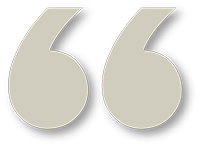
 1201 West Peachtree Street #2339 Atlanta, GA 30309+1-770-212-3795$0-$100000
1201 West Peachtree Street #2339 Atlanta, GA 30309+1-770-212-3795$0-$100000Justin was a complete pleasure, he answered all my questions without hesitation. He was very knowledgeable and helpful. I took time to write this review because his friendliness is unmatched and I truly appreciated him for taking the time out to assist me with my court proceedings. Thank you ,Justin

Riders and Other Endorsements
Riders are optional add-ons to your insurance policy that provide additional coverage. They usually cost extra, but they can be valuable in certain situations.
Here are two common optional coverages to look for that may be particularly helpful after the accident:
- Medical Payments Coverage (MedPay): Medical Payments Coverage (MedPay) will pay for the medical costs of victims other than the insured in certain cases. MedPay is an optional auto insurance coverage that helps pay for medical expenses resulting from injuries sustained in an auto accident, regardless of fault. This coverage typically applies to the insured, their passengers, and sometimes even pedestrians struck by the insured's vehicle.
- Rental Reimbursement Coverage: This coverage helps pay for a rental car while your vehicle is being repaired after a covered accident. It covers the cost of a rental car up to a certain daily maximum, for a set number of days. Some policies may also cover alternative transportation.
Uncommon Coverage Items
These coverages are not usually included in standard insurance policies.
- Roadside assistance: This service helps motorists who are stranded on the road. It covers things like battery jump starts, tire changes, fuel delivery, towing, and lockout assistance.
- Towing and labor coverage: This coverage helps pay for towing and labor services if your vehicle breaks down. It covers the cost of towing your vehicle to a repair shop and the cost of labor to get your vehicle running again.
- Gap Insurance: This is an optional add-on coverage that helps pay the difference between what your insurance company will pay you and what you still owe on your car if it is totaled or stolen. It is not a liability insurance coverage and is typically purchased from your car dealer or loan lender. You may already have gap insurance coverage if you financed your car through a dealership or lender.
- Accident Forgiveness: This is another optional add-on coverage that is meant to prevent your insurance rates from increasing as a result of your first at-fault accident. It is typically available for a fee and may be included in some auto insurance policies. It typically covers only your first at-fault accident.


